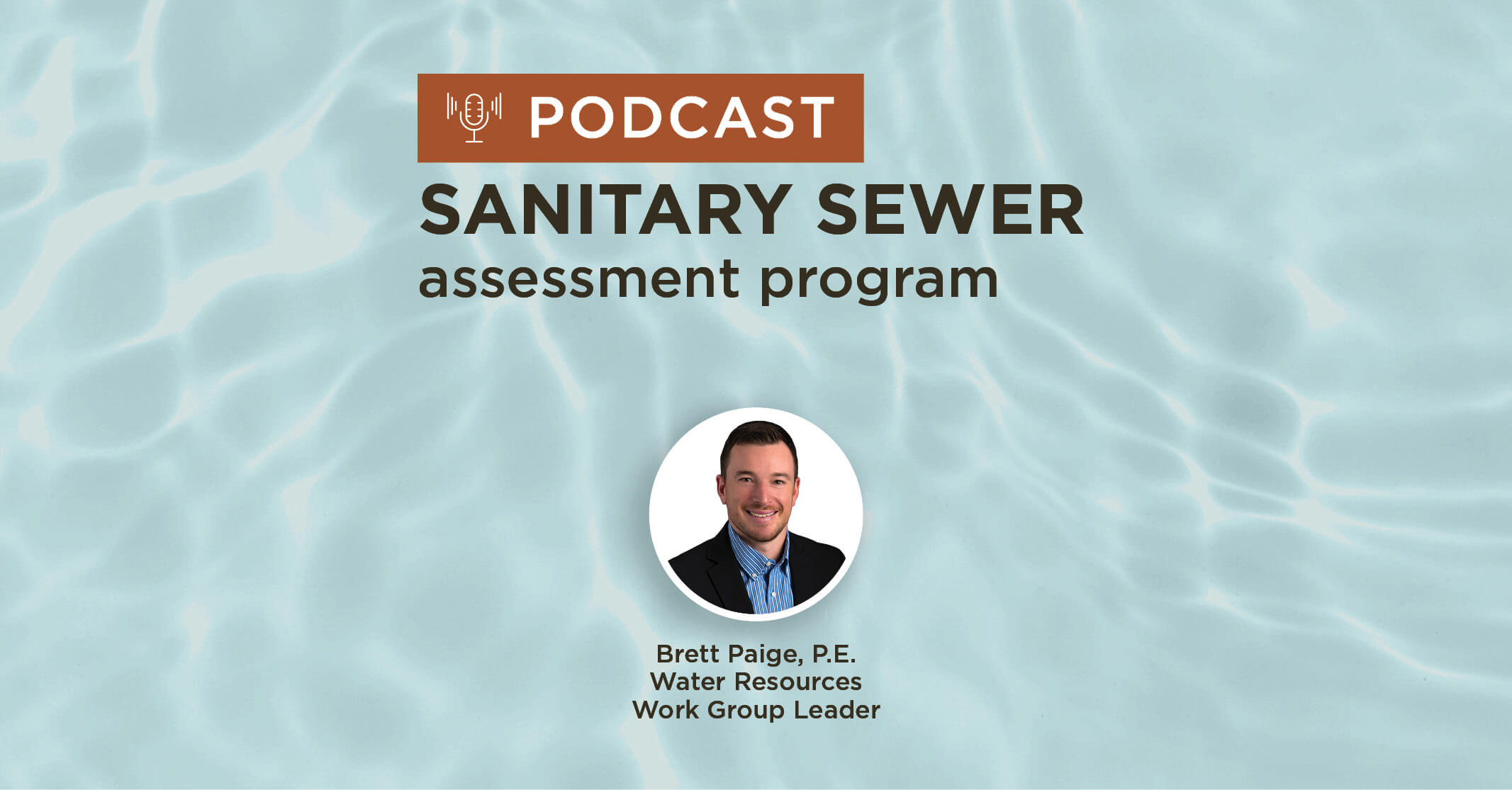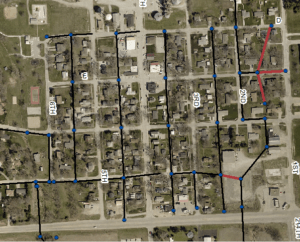Planning for a Sanitary Assessment Program: Important Factors to Consider
A properly organized assessment program is crucial in obtaining important information about a community’s wastewater collection system, helping to evaluate its physical condition and functionality. This data plays a significant role in determining the estimated service life of infrastructure components and planning for future mitigation projects.
In this podcast, Brett Paige, P.E., discusses the various factors a community should consider before carrying out a sanitary assessment program and how to use the collected data to gain valuable insights into the performance of your system.
Podcast Agenda
- Assessment Program Planning Tools (00:18)
- Planning for Projected Costs & Inflation (1:32)
- Determining Constructability (1:42)
- Incorporating Conservative Contingencies (2:01)
- Structuring Permitting Timelines (2:23)
- Available Budget vs. System Needs (2:57)

Brett Paige, P.E.
Water Resources Work Group LeaderBrett Paige, P.E.
Water Resources Work Group LeaderSystem analysis, design, utility coordination, construction document preparation, cost estimating, permitting
Assessment Program Planning Tools
(00:18)
Through an assessment program, you’re going to end up with a ton of information to store—terabytes and terabytes of information. Having a system in place to handle that and to be able to quickly reference is going to be important. We’re going to need to leverage ranking tools, and we’re going to take that risk assessment and associate cost to those priority high-risk assets. We’re going to create visual aids to track the status and create schedules to understand impact or graphs and GIS maps.
For me personally, I’m a very map-oriented type of person, so GIS mapping and being able to understand with an aerial backdrop where some of the projects are located is a great way to understand the next steps and create a visual of what that’s going to look like. Then we can filter out certain risk ranks to try to combine projects.
Maybe you have two risk rank five assets and a four in between. It probably makes sense to do them all together in the same project through some of those planning tools.
Building planning level costs. I think there are some more recent difficulties in today’s world than we’ve had in the past. Everybody’s probably aware of the dramatic bidding climate that we’re in right now. It seems like there’s a new shortage for a different material almost every single day. There are other impacts related to that. COVID is obviously a huge factor. Any fluctuations in oil and then hurricanes are another common weather element to pay attention to.
Planning for Projected Costs & Inflation
(1:32)
Inflation, making sure that we’re planning for that as we’re projecting costs out for decades down the road. Be sure that we’re not undershooting the budget that will be needed years down the road.
Determining Constructability
(1:42)
Focusing on constructability is a big focus that we typically employ from a design level. Still, it’s also good at the planning level to make sure as you’re looking at your recommendations that whatever you’re looking to improve can be built and thinking of all impacts that might be adjacent to that type of improvement, whether it’s utility-related or property-related.
Incorporating Conservative Contingencies
(2:01)
Use conservative contingencies, sometimes 20% – 30%, just making sure that we’re not putting together a planning budget that’s going to fall short whenever that money needs to be allocated—thinking about any bypass or temporary facilities that are needed. Bypass can account for 5% – 20% of the project, so make sure that we’re considering all those small detail elements as we’re putting together planning budgets.
Structuring Permitting Timelines
(2:23)
Permitting timelines is probably more applicable for getting an accurate schedule. If you have locations where a longer permitting requirement is going to be needed, making sure that those projects are being combined can help lessen some of the permitting difficulties.
Then thinking of all scenarios, any system impacts that could result from rehab, such as odor control, and more concentrated flows to the plant. Do we want to align one section at a time or smooth that out for multiple sections while we’re there? Just making sure that we’re not so focused on one element of the project that we are looking at a high-level overview of everything that is going to be impacted by that type of improvement.
Available Budget vs. System Needs
(2:57)
Available budget versus system needs. We’re able to take those risk curves and look at it a dollar amount associated with all category fives and above and just try to understand how much we can afford now and where we want to stop?
Each asset that was inspected is given a point in this risk curve. So we can take each pipe and essentially put a dollar amount to it, and we’re able to break up these categories to identify budget pots, to get to the point where we’re comfortable with the reduction of risk and a point that’s financially manageable for the community. Just wanting to make sure that these things are understood early on in the project, and you don’t wait till it’s too late when there are not enough dollars allocated in your Capital Improvement Plan.

